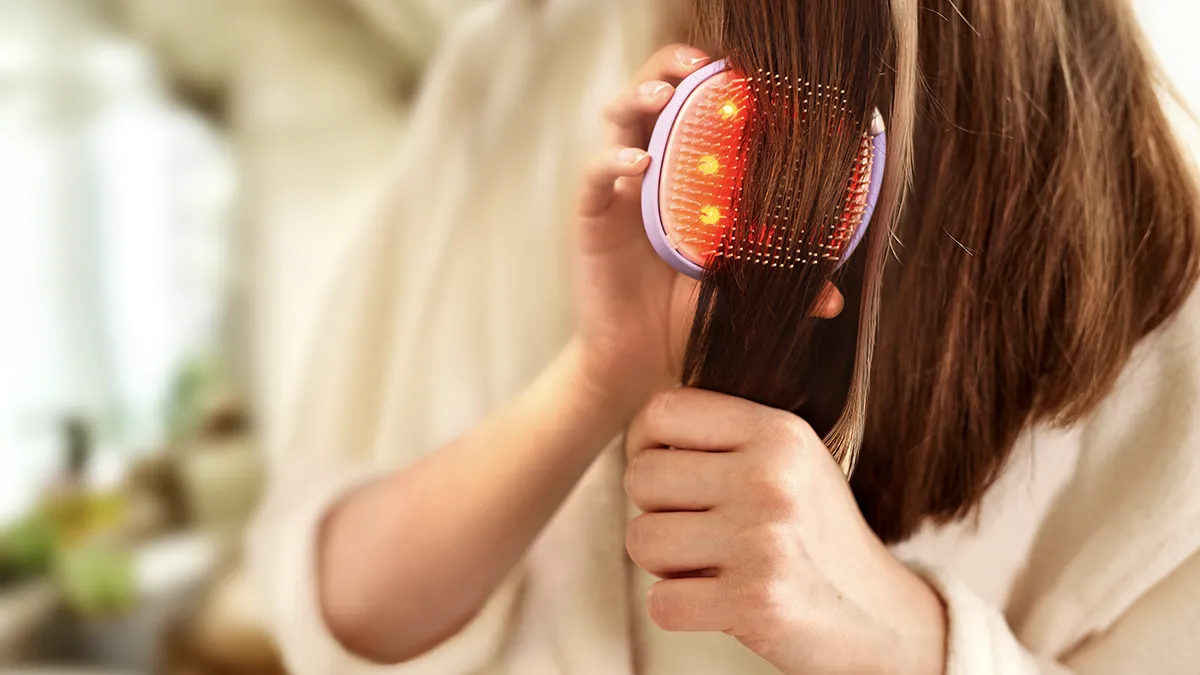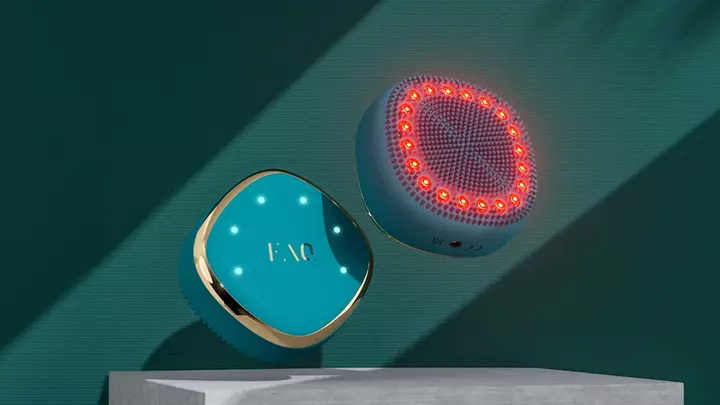4 min read
Frizz-Free Living: The Top Hair Straightening Methods Ranked

Kiss your frizz goodbye. With the intense heat of summer looming upon us, our hair is getting frizzier and our willpower to fight it on a daily basis is dwindling. But before you go spend an arm and a leg on a snazzy new hairstyle, check out our hair straightening treatment rankings for the best investment possible for your luscious locks.
1. Flat Iron
Okay, so this isn’t really a straightening treatment, but for beginners, a flat iron is the easiest way to tame frizzy hair until your next shampoo. When straightening your hair, make sure it’s completely dry before using a flat iron to avoid further damage to your hair. As straightening hair can make it dry and brittle, be sure to always use a heat-protecting spray and try to go heat-free on days when you don’t need a straightener. If you want to minimize hair damage and the risk of lifeless, dull hair opt for ionic hair straighteners that use negative ions to break down water molecules on the hair’s surface - reducing frizz and leaving hair looking smoother and shinier. They work without extreme heat, which is less damaging to hair.
2. Hair Rebonding
Rebonding is a chemical hair treatment that makes hair straight, shiny, and sleek. Hair rebonding involves using a cream or relaxant softener to break the natural hair structure, followed by a neutralizer to rebond the structure again. Rebonding is ideal for those who have problems taming their wavy or thick hair; however, once the hair starts to grow, the treatment can be easily detected - leading to potential unevenness. As popular as rebonding is, it can only be done every once in a while as it can make hair very fragile and weak. It does get your hair more straight than any other process, but it also comes with a higher risk of hair damage – so choose this one wisely!
The cost of the treatment depends on the salon, the length of your hair, how well-maintained it is, and whether you choose non-toxic ingredients, which are often more expensive. Also, if you have colored hair, be sure to avoid coloring treatments right after or before rebond to allow your hair to breathe between treatments to minimize the risk of damage.
3. Chemical Straightening (Hair Relaxing)
Chemical straightening, or hair relaxing, is the process of breaking protein bonds in the hair. When a certain number of bonds are broken in curly or wavy hair, it then becomes straight. However, as simple as that sounds, the execution of it by a professional is crucial for its success. For example, if too many bonds are broken, your hair will go limp, and if not enough are broken, then the hair doesn’t straighten out. How is this treatment different from the previous one? Both hair rebonding and hair relaxing are chemical treatments (using different chemicals), but the key difference is that relaxed hair is less long-lasting than rebonded hair - relaxing treatment has to be done every 2-3 months, while hair rebonding usually lasts 6-7 months (with touch up needed after three months).
Also, hair relaxing treatment usually does not straighten the hair completely; it’s often necessary to additionally strengthen your hair after the treatment if you want it to be completely straight. If you choose a hair-relaxing treatment, remember never to skip conditioning after you wash your hair. Relaxers often strip hair of its natural oils, making it prone to dryness and damage. Conditioners help restore lost moisture in the hair, maintaining its overall health.
4. Japanese Straightening (Thermal Reconditioning)
Using both chemicals and heat, Japanese straightening is a smoothing and conditioning treatment that promotes a permanently altered structure of hair. During a Japanese straightening treatment, protein bonds in the hair are loosened and then reshaped by hair cells. For those of you who can’t sit still, be forewarned this is a lengthy process that involves numerous steps - six to eight hours to be exact. After a few days, you will also need to return to the salon for an hour or so for the final step. On the plus side, this treatment lasts about six to seven months. As amazing and long-lasting as this treatment sounds, it can be very damaging to hair in the long run, especially if your hair has been colored or received other chemical treatments.
5. FLIP™ play detangler and frizz control brush
The strategically spaced bristles with a special anti-static coating gently separate hair, handling tangles without breaking strands while static electricity is annulled for instantly glossier and smoother hair with no flyaways and frizz.

- 3 LED colors: Red reduces breakage, blue calms the scalp, and green revitalizes hair follicles.
- Advanced anti-static finish: Bristles easily glide in all hair types for a glossy finish, no frizz or flyaways.
- Less breakage. Strategically spaced TPEE bristles gently separate hair and minimize mechanical damage.
- Protective frame: Flips forward to protect the brush from damage and lint while in a bag or drawer.
- Smart Swedish design: To be used on wet and dry hair, app-connected, battery life up to 6 Hrs/charge.
- Cool factor: Oh come on, just look at it.
6. Keratin Treatment (Brazilian Straightening)
Keratin treatments have become increasingly popular over the past few years, and with good reason. They are one of the safer hair straightening techniques out there. Keratin is a natural protein that is already found in our hair; however, as protein content decreases with age and a poor diet, so do keratin levels. The keratin treatment adds a coating of keratin onto the hair shaft, giving it nutrients that leave hair silky, smooth, and straight. After a salon professional applies keratin solution to hair, a 450-degree flat iron is used to seal in the formula to hair strands (protect your ears from the heat, ladies), creating a moisture barrier that reduces frizz and gives hair a shiny finish.
The best part about a keratin treatment is that hair grows back into its original structure gradually, and the treatment can be done repeatedly without worrying about damaging hair. In fact, keratin treatments actually give better results on repeated usage. While it’s not the cheapest treatment, it will last about six months, especially if you follow the treatment with keratin-infused sulfate-free shampoos and conditioners! Tempting, right?
We know that everyone’s hair is different; therefore, while our rankings are based on how safe and effective the treatments will be, each person may have completely different results. For best results, be sure to talk to a hair care professional before embarking on a permanent straightening adventure!








Comments
91 comments
Leave a comment